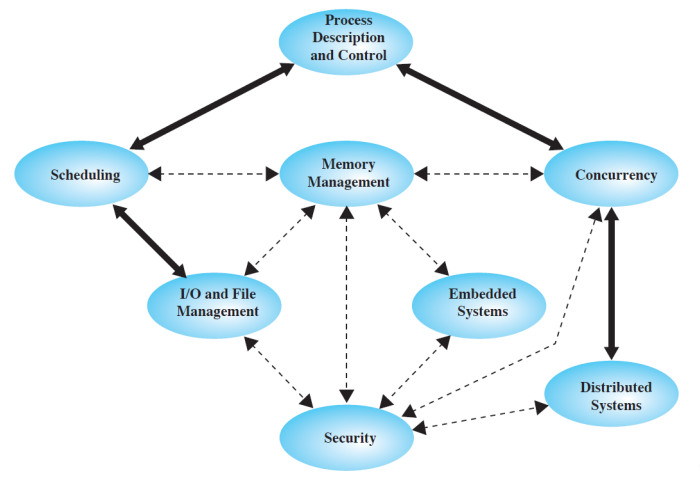CS3101 Lecture 1
Basic Elements
1. Processor - Central Processing Unit (CPU)
Two components: Control Unit Arithmetic (CU) & Logic Unit (ALU)
Works repeatedly and continuously in cycles to execute instructions
2. Main Memory - Random-Access Memory (RAM)
随机存取, 指的是当存储器中的数据被读取或写入时,所需要的时间与这段信息所在的位置或所写入的位置无关
Consists of a set of locations defined by sequentially numbered addresses
Stores data and programs
Volatile (Data lost when power off)
3. I/O Modules
Moves data between the computer and the external environment like storage (hard drive)
4. System Bus
Provides for communication among processors, main memory, and I/O modules
Instruction Execution
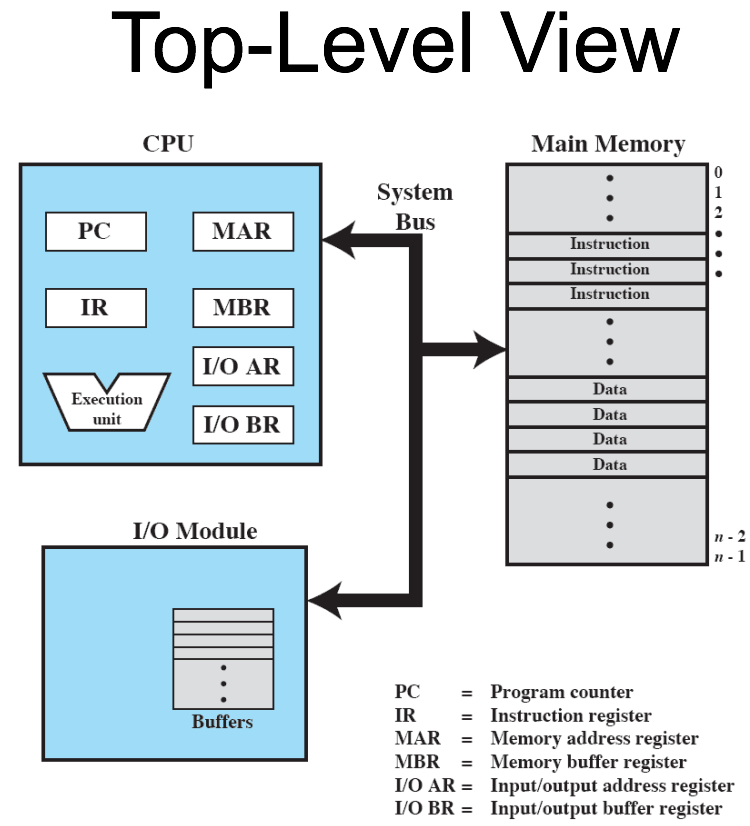
Instruction Execution
A program consists of a set of instructions stored in memory
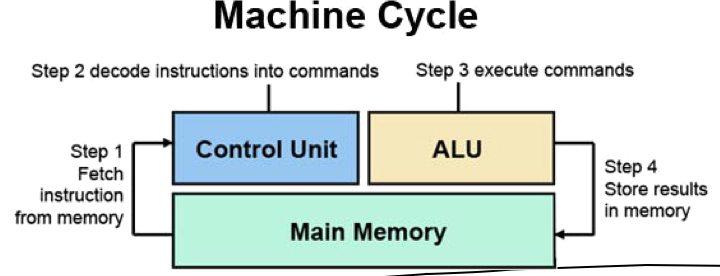
Machine cycle:
- Processor reads (fetches) an instruction from memory*
- Processor interprets (decodes) the current instruction
- Processor executes the instruction*
- Processor stores the result back to memory
Processor Registers - special memory locations inside the processor that can be accessed very fast:
- Program Counter (PC) holds next address of the instruction to be fetched
- Fetched instruction loaded into Instruction Register (IR) (For decoding)
- Execution result stored in Accumulator (AC) temporarily
- Program Status Word (PSW) contains execution status information
Example of program execution
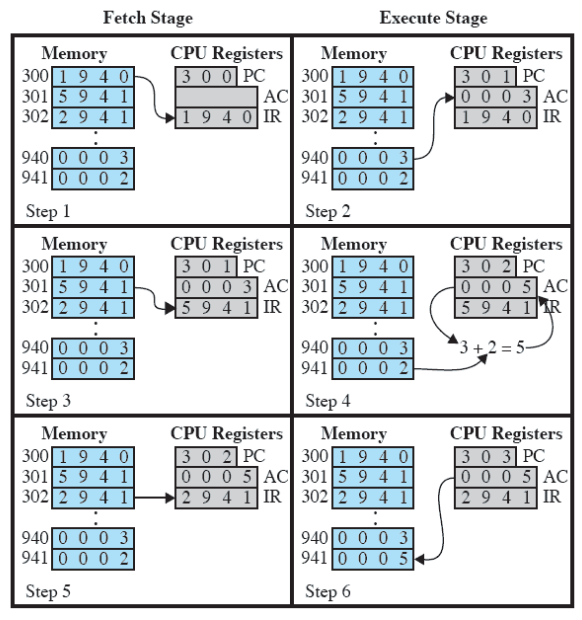
The first 4 bits from opcode like 0001(1 hex): Load AC from memory, 0010(2hex): Store AC to memory, 0101(5 hex): Add to AC from memory.
The remain 12 bits refer to a memory address
Interrupts*
Interrupt the normal sequencing of the processor by other modules.
Provided to improve processor utilization
中断模式就是说CPU不主动访问这些设备, 只管处理自己的任务. 如果有外部设备要与CPU联系,或要CPU处理一些事情,它会给CPU发一个中断请求信号. 这时CPU就会放下正在进行的工作, 将其暂时保存在Program Counter (PC), 转而寻找中断请求源, 并处理这个外设的请求. 处理完中断后,CPU返回去继续执行中断以前的工作。
看书(cpu处理一个进程) -> 电话响(外设发起中断请求) -> 放下书并插书签(中断并保存) -> 接电话(cpu处理另一个进程) -> 继续看书(cpu回到原先进程)
Uniprogramming vs Multiprogramming:
Uniprogramming: only one program is running at a given time.
Multiprogramming: processor has more than one program to execute.
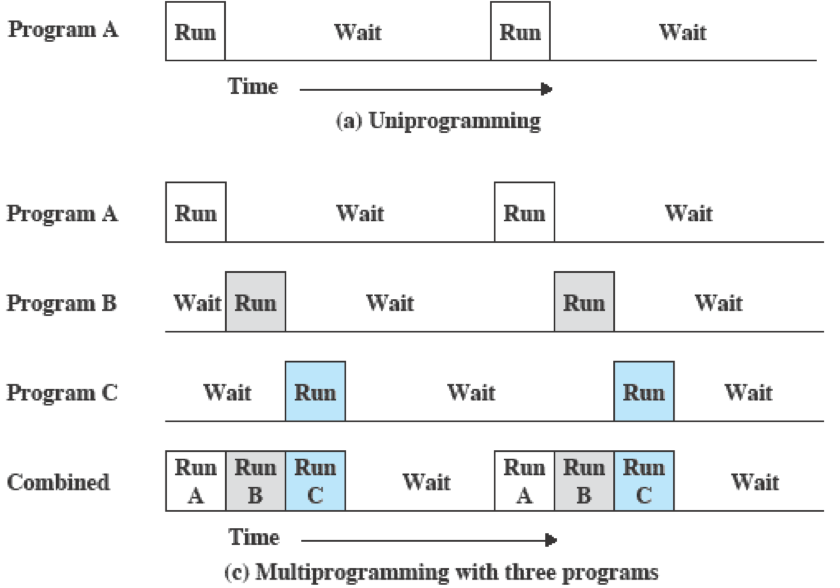
Example:
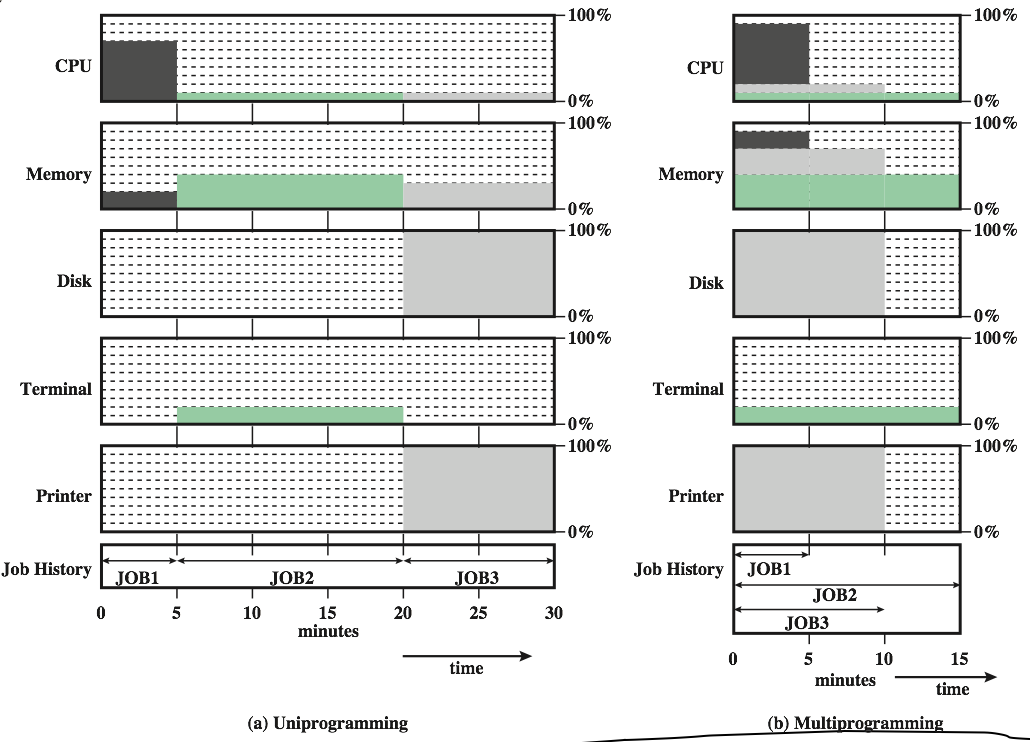
With multiprogramming, the improvement of average resource utilization, throughput and response times is evident.
The Memory Hierarchy
Major constraints in memory: amount, speed, expense
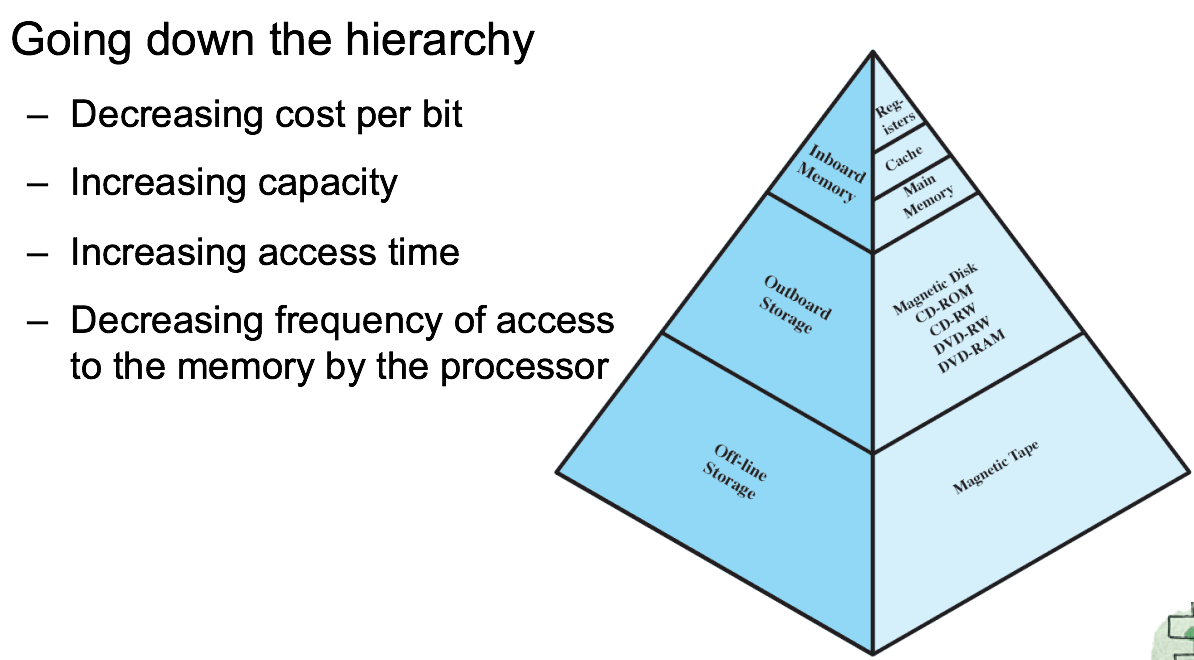
Cache memory:
Reminder: Processor must access memory at least once per instruction cycle -> processor execution is limited by memory cycle time, but processor speed is much faster than memory access speed!
Solution: Copy the information in use from slower to faster (but smaller) storage (cache memory) temporarily.
Cache is checked first to determine if the information is there.
- If it is, information used directly from the cache
- If not, data copied to cache and used there
CPU缓存(Cache Memory)是位于CPU与内存之间的临时存储器,它的容量比内存小的多但是交换速度却比内存要快得多. 高速缓存的出现主要是为了解决CPU运算速度与内存读写速度不匹配的矛盾,因为CPU运算速度要比内存读写速度快很多,这样会使CPU花费很长时间等待数据到来或把数据写入内存. 在缓存中的数据是内存中的一小部分,但这一小部分是短时间内CPU即将访问的,当CPU调用大量数据时,就可先缓存中调用,从而加快读取速度.
The principle of locality: Data which is required soon is often close to the current data. If data is accessed, then it’s neighbors might also be accessed in the near future

Secondary memory(storage devices):
-Provide large nonvolatile storage capacity
-Use to store program and data files
-Common used: magnetic disks
- Disk surface is logically divided into tracks, which are subdivided into sectors.
- The disk controller determines the logical interaction between the device and the computer.
I/O Communication Techniques
When the processor encounters an instruction relating to I/O, it executes that instruction by issuing a command to the appropriate I/O module. Three techniques are possible for I/O operations:
-Programmed I/O (Performance is poor)
- CPU issues a command to I/O module -> I/O module performs the requested action and set the I/O status register-> CPU periodically checks the status of I/O module until it determines the instruction is completed.
-Interrupt-driven I/O (More efficient)
- CPU issues a command to I/O module and then goes on to do some other useful work -> I/O module will then interrupt CPU to request service when it is ready to exchange data with CPU -> CPU executes the data transfer and then resumes its former processing
-Direct memory access (DMA) (Most efficient)
Perform by a separate module
- When CPU wishes to read/write, it issues a command to DMA module containing much information -> DMA module transfers the entire block of data directly to and from memory without going through CPU
Operating System Objectives & Functions
A program that controls the execution of application programs.
An interface between applications and hardware.
Main objectives of an OS:
- Convenience - Making a computer more convenient to use
- Efficiency - Allowing computer resources to be used efficiently
- Ability to evolve - Permitting effective development, testing and introduction of new system functions
OS as a User/Computer Interface:
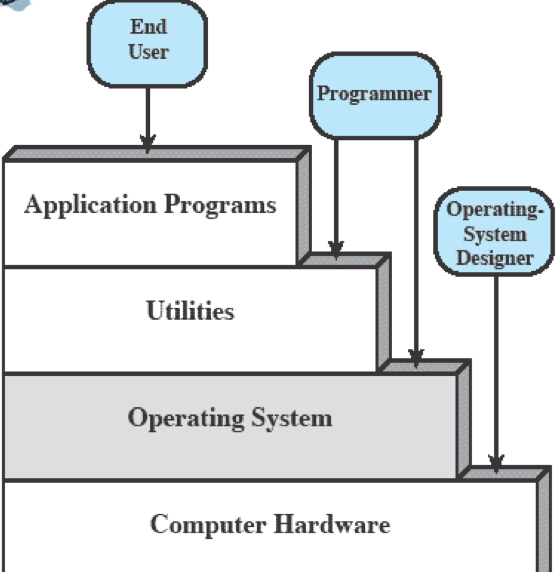
- Programmer makes use of a set of system programs (utilities) in developing an application for end user
- The most important collection of system programs comprises the OS
OS services:
- Program development - provides facilities and services, such as editors and debuggers, to assist the programmer in creating programs.
- Program execution - handles steps need to be performed to execute a program.
- Access I/O devices - provides a uniform interface so that programmers can access I/O devices using simple reads and writes.
- Controlled access to files - provides protection mechanisms to control access to the files for the system with multiple users
- System access - for shared or public systems, OS controls access to the system as a whole and to specific system resources in order to provide protection of resources and data from unauthorized users and resolve conflicts for resource contention.
- Error detection and response - provide a response that clears the error condition with the least impact on running applications.
- Accounting - collect usage statistics for various resources and monitor performance parameters such as response time.
OS as Resource Manager:
A computer is a set of resources for the movement, storage, and processing of data.
The OS is responsible for managing these resources
- determines how much processor time is to be devoted to the execution of a particular user program
- controls the allocation of main memory
- decides when an I/O device can be used by a program in execution
- controls access to and use of files.
Major topics of an OS:
- Operating Systems are among the most complex pieces of software ever developed.
